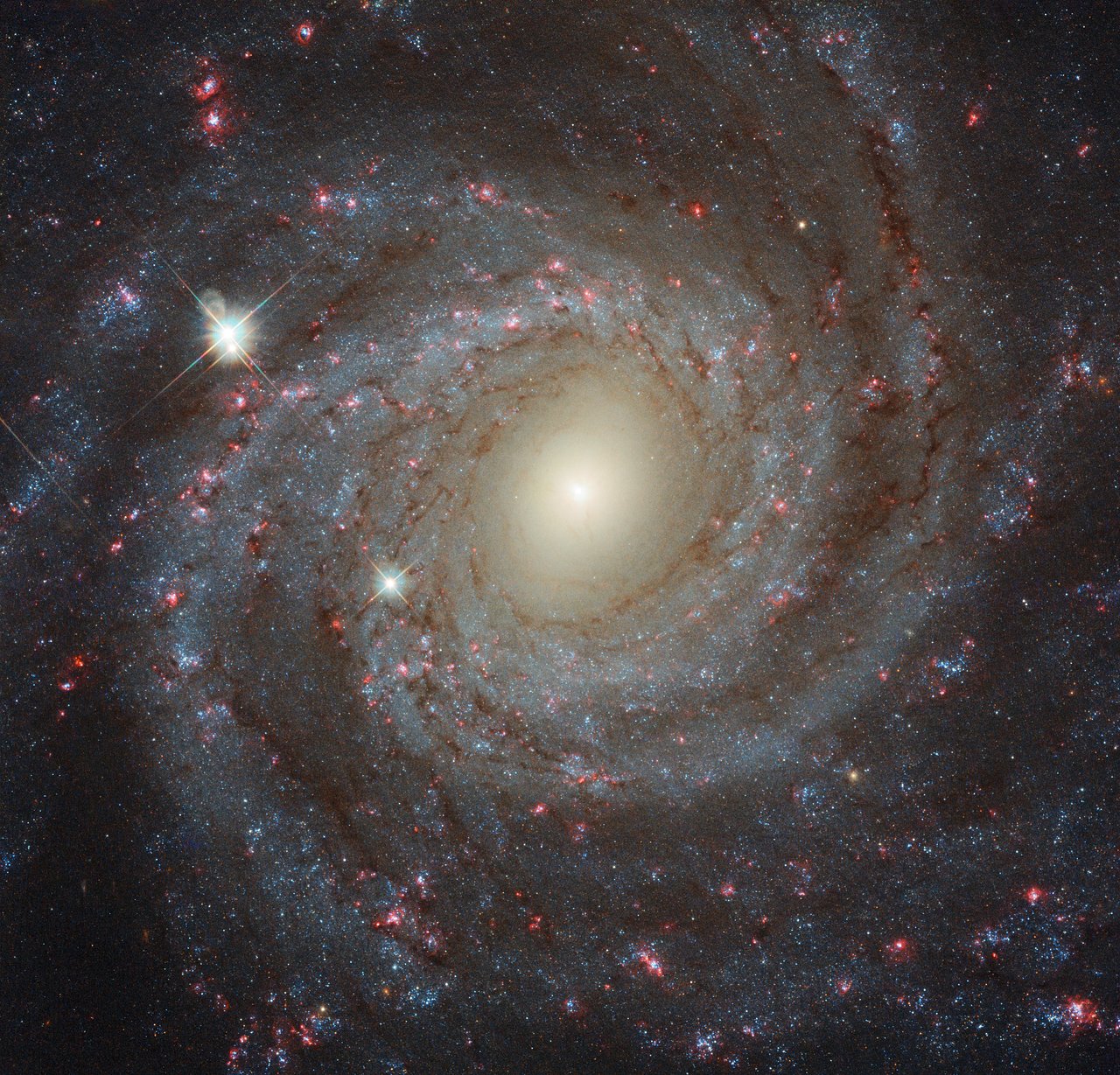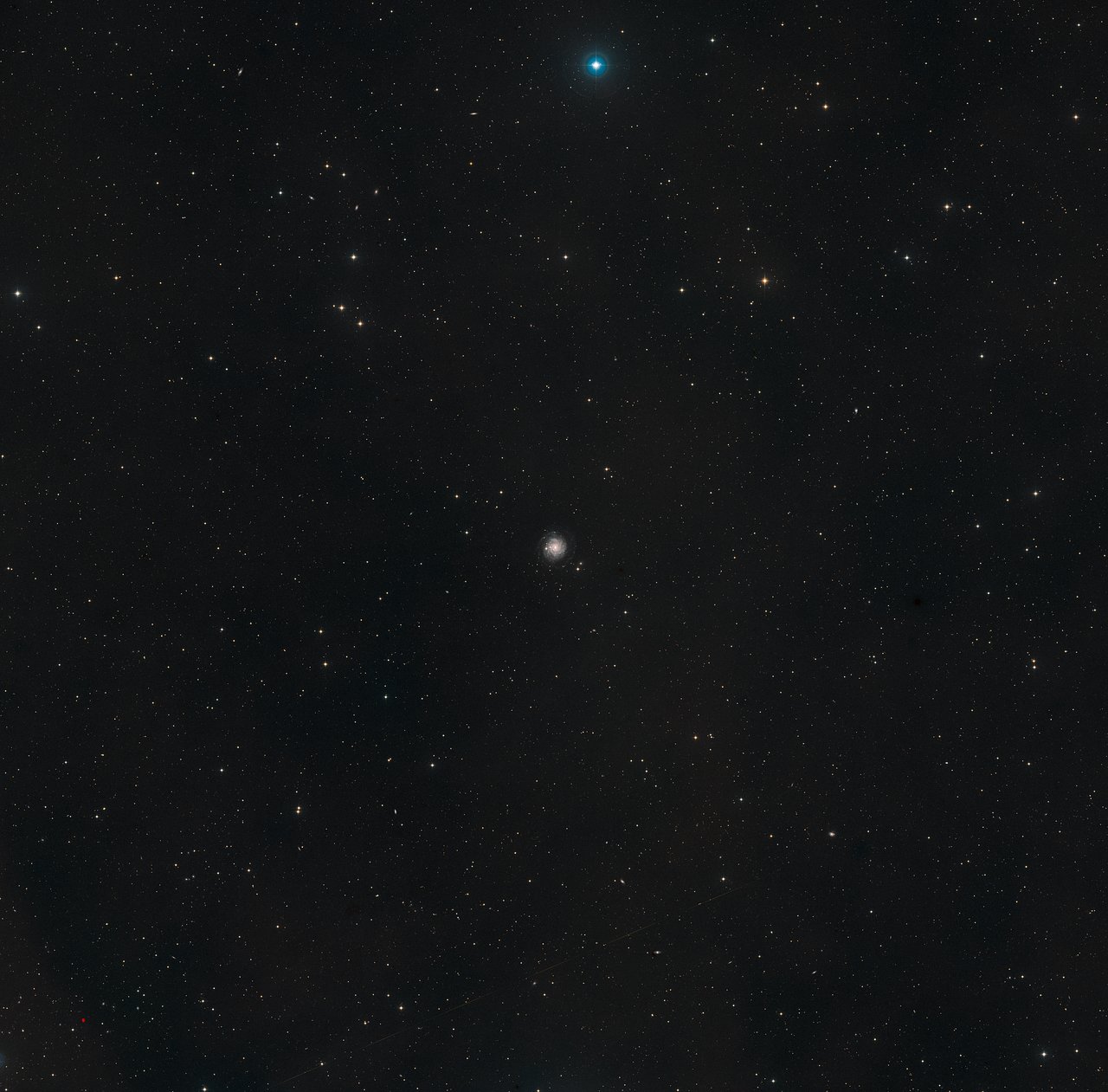Spiral Galaxy's Arms Hug Baby Stars in Heartwarming Valentine's Day Photo
Talk about a cosmic Valentine. The Hubble Space Telescope captured a stunning view of the spiral galaxy NGC 3344, showing the birthplace of new stars.
The galaxy is located about 20 million light-years from Earth, in the constellation Leo Minor. It's roughly half the size of the Milky Way and is classified as a weakly barred spiral galaxy, according to a statement from Hubble researchers. Two-thirds of all spiral galaxies, including the Milky Way, are barred, meaning they have a central "bar" of stars across their middle. NGC 3344's bar is visible in the newly released image taken by Hubble's Wide Field Camera 3.
"Hubble's capacity to observe celestial objects in different wavelengths allows us to see more than just the spiral arms sweeping out loosely around the center in a gorgeous whorl," Hubble researchers said in the statement. [Valentine's Day in Space: Love Photos of the Cosmos]

"This image is a composite of images taken through different filters, ranging from the near ultraviolet, to the optical and the near-infrared," according to the statement. "Together they show a more complete picture of the galaxy than the human eye alone could possibly see."
Hubble glimpsed areas in the spiral arms (shown as bright blue in the image), where new stars are being formed. The stars pull from reservoirs of dust and gas that are also visible in the image as red patches.
The bright-blue stars on the left of the image are only photobombing NGC 3344, however — they're not a part of the galaxy itself. These stars are actually in the Milky Way galaxy and were just in the line of view when Hubble pointed its camera toward NGC 3344.
While spiral galaxies look spectacular when they appear face-on, just like with NGC 3344, not all galaxies are so conveniently positioned for us to see them this way. Some galaxies are seen more edge-on, showing how the galaxy's vertical structure is constructed. Others are at an angle, which provides information about the structure and size of the arms.
Get the Space.com Newsletter
Breaking space news, the latest updates on rocket launches, skywatching events and more!
"While its face-on orientation reveals much about NGC 3344's detailed structure, this galaxy is still enigmatic; astronomers have noticed that some of its outer stars are moving in a strange way," Hubble researchers said.

"Often, the high concentration of stars in the center of a galaxy can affect the movements of the outer stars, but this does not seem to be the case in NGC 3344," they added. "Astronomers suspect that these weirdly behaving outer stars may actually have been stolen from another galaxy, after a close encounter that took place long ago."
The galaxy is also located in an interesting spot. The Milky Way, the Andromeda galaxy and about 40 other galaxies are part of a local "neighborhood" in space called the Local Group. NGC 3344, however, is on a small spur that belongs to the larger Virgo Supercluster, which contains several thousand galaxies.
Follow us @Spacedotcom, Facebook and Google+. Original article on Space.com.
Join our Space Forums to keep talking space on the latest missions, night sky and more! And if you have a news tip, correction or comment, let us know at: community@space.com.

Elizabeth Howell (she/her), Ph.D., was a staff writer in the spaceflight channel between 2022 and 2024 specializing in Canadian space news. She was contributing writer for Space.com for 10 years from 2012 to 2024. Elizabeth's reporting includes multiple exclusives with the White House, leading world coverage about a lost-and-found space tomato on the International Space Station, witnessing five human spaceflight launches on two continents, flying parabolic, working inside a spacesuit, and participating in a simulated Mars mission. Her latest book, "Why Am I Taller?" (ECW Press, 2022) is co-written with astronaut Dave Williams.









